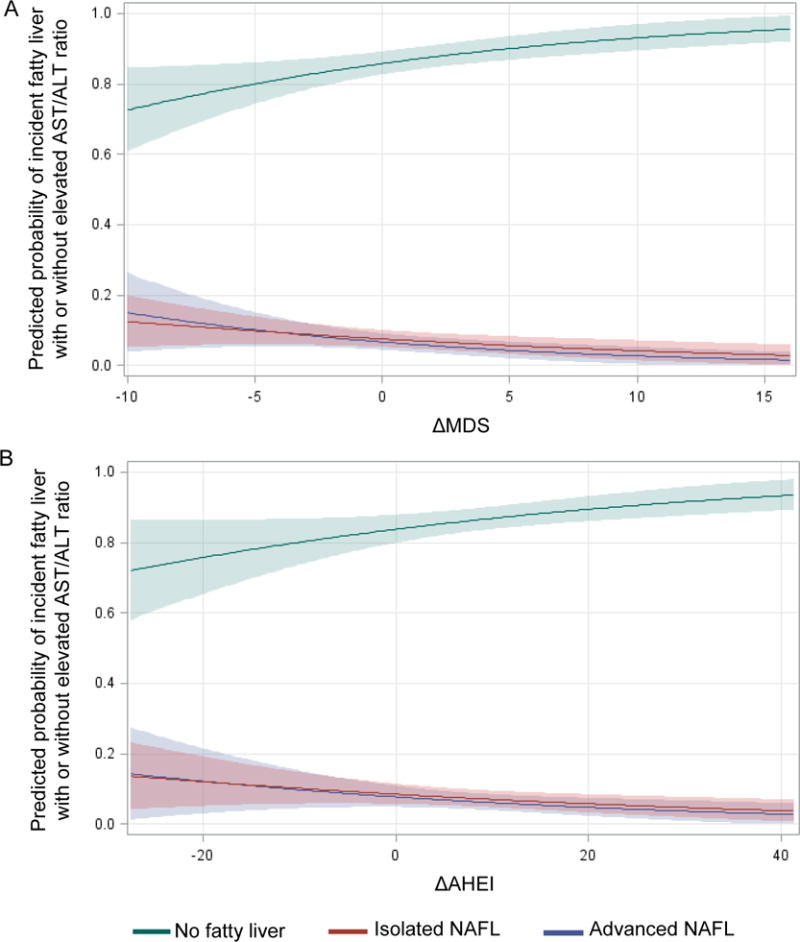Figure 2.

Predicted probability of incident fatty liver with elevated AST/ALT ratio (advanced NAFL) and incident fatty liver without elevated AST/ALT ratio (isolated NAFL) according to the change of diet quality. 2A for the Mediterranean-style dietary score (MDS) and 2B for the alternative healthy eating index (AHEI). Sample size was 1092, no fatty liver (N=912), isolated NAFL (N=122), and advanced NAFL (N=58). Model adjusted for sex, age, baseline MDS or AHEI, baseline liver-phantom ratio, baseline AST/ALT ratio, and baseline values of energy intake, smoking, physical activity level, BMI, as well as change in smoking status, physical activity, and energy intake.
